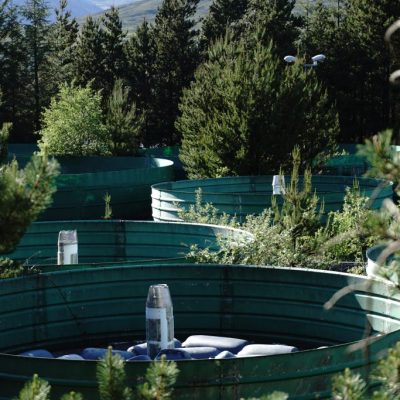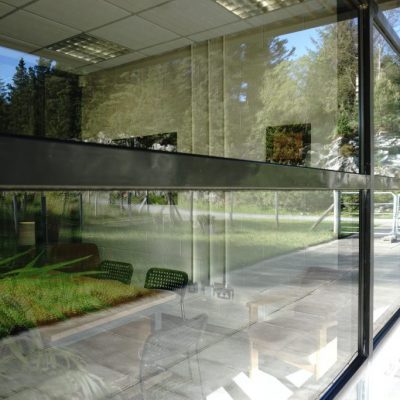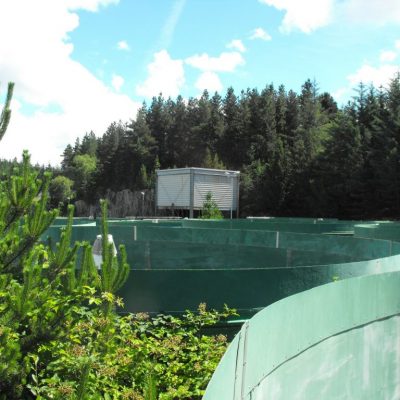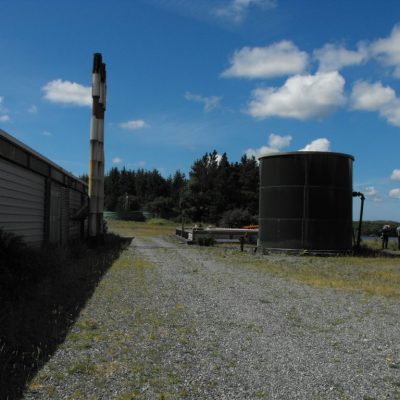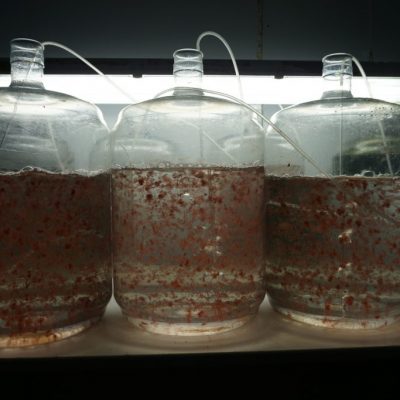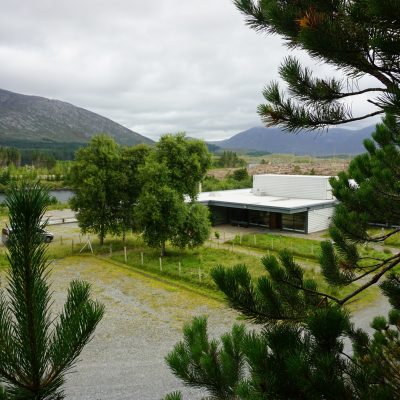History
The facility was built as a salmon hatchery in the late 1980s. Scott Tallon Walker architects were commissioned by Carrolls cigarette company to design the biggest, most advanced salmon hatchery in the world. The company ran a fully automated, computer-controlled hatchery and supplied offshore salmon farmers with smolt via helicopter. The business ultimately failed because the factory was built too high above the adjacent lake, and the cost of recirculating the water was too heavy. When the business closed, it left behind it a long low-lying modernist building on the shores of Derryclare Lough. The facility was bought by the current owners in 2007 with a view to developing a centre of scientific research and development.
They have since spent some ten years working to optimise the over-engineered building and surrounding industrial architecture for ethical, ecologically-sound aquacultural projects. Projects have included a research station for seaweed farming and a product which protects bees from the varroa mite and the nosema virus. In 2019, they have undertaken what will be the largest reforestation project in the country, as they plan to replace the surrounding Sitka spruce forest with native woodland. This will deliver a broad range of ecosystem services to native woodland biodiversity as well as positively impacting on surrounding water courses.
Share:
